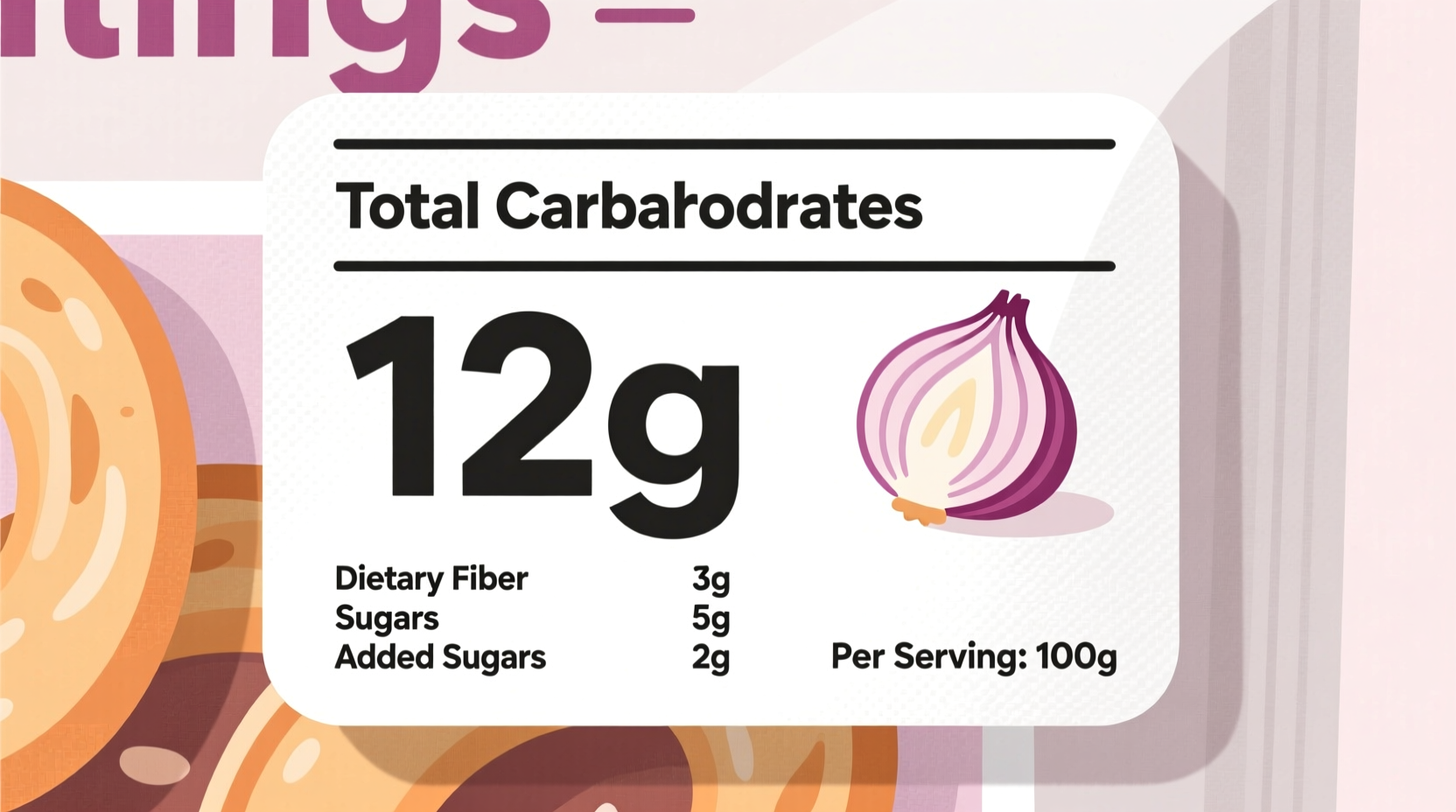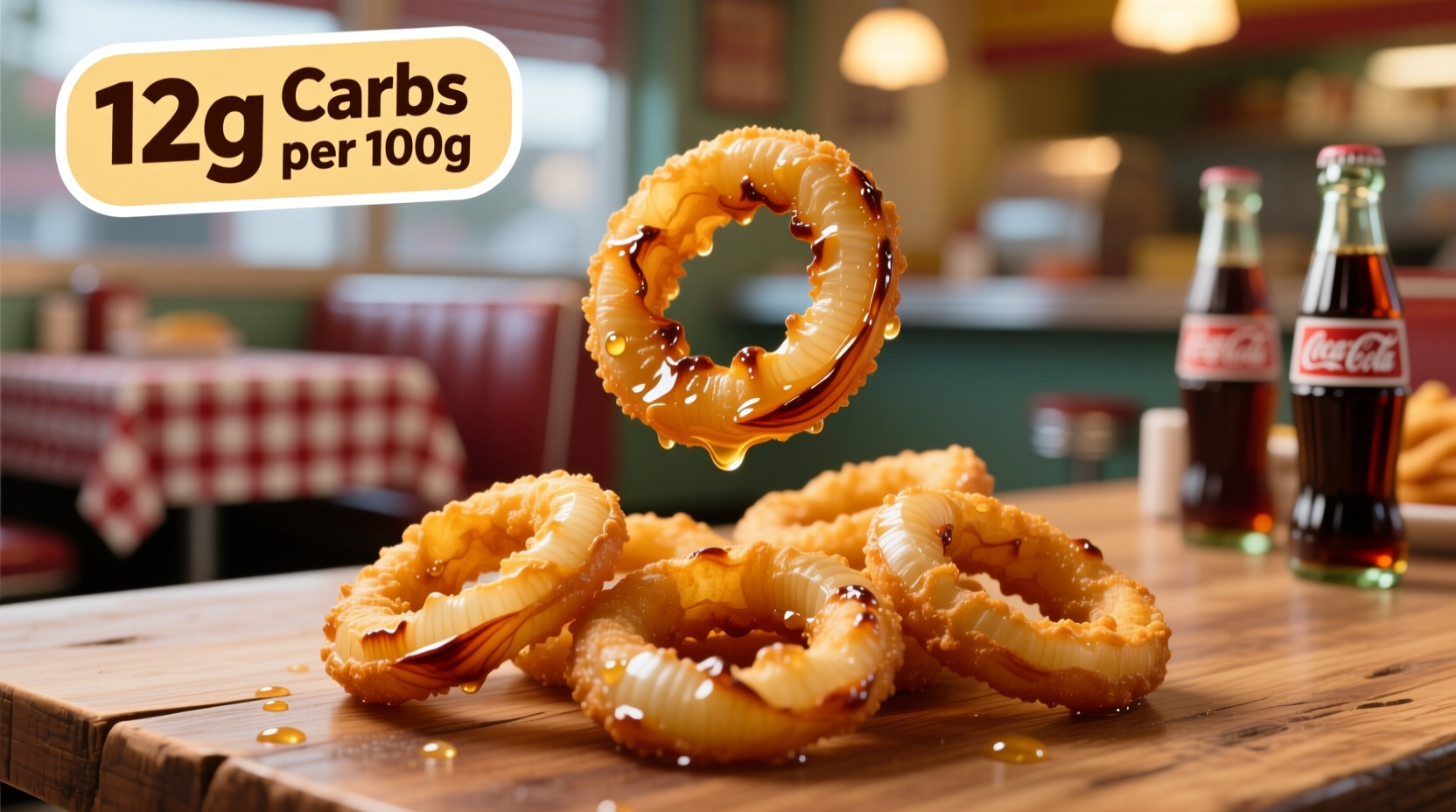Understanding the carbohydrate content in onion rings is essential for anyone tracking their nutritional intake, whether for weight management, diabetes control, or general health awareness. This guide provides accurate, science-backed information to help you make informed dietary choices without sacrificing flavor.
What Determines Carb Content in Onion Rings?
Carbohydrate levels in onion rings aren't fixed—they fluctuate based on several preparation factors. Unlike many nutrition guides that provide single-number answers, understanding these variables gives you better control over your intake.
Batter Composition Matters Most
The batter contributes the majority of carbs in onion rings. Traditional recipes use:
- Flour-based batters: 25-35g carbs per 100g of finished product
- Panko breadcrumb coatings: Slightly higher at 30-40g carbs
- Gluten-free alternatives: Can range from 20-50g depending on flour substitutes
According to USDA FoodData Central, the standard commercial preparation yields approximately 42g of carbohydrates per 100g serving, with 2g coming from the onion itself and the remainder from the coating and absorbed oil.
Serving Size Reality Check
Restaurant portions often exceed standard measurements. A typical restaurant side order (105g) contains 44g carbs, while fast food versions (84g) average 38g. This represents nearly 15% of daily carb allowance for those on a 2,000-calorie diet.
| Preparation Method | Carbs per 100g | Fiber Content | Sugars |
|---|---|---|---|
| Deep-fried restaurant style | 42g | 2.1g | 3.5g |
| Air-fried homemade | 28g | 2.8g | 3.2g |
| Baked with minimal coating | 18g | 3.5g | 3.0g |
| Fast food chain standard | 45g | 1.9g | 4.1g |
This nutritional comparison shows how cooking method dramatically impacts carb content. The data comes from USDA's National Nutrient Database for Standard Reference, which tracks over 8,000 food items with laboratory-verified nutrition profiles (fdc.nal.usda.gov).
How Onion Rings Compare to Other Fried Foods
When evaluating carb content, context matters. Here's how onion rings stack up against common alternatives:
- French fries: 30g carbs per 100g (typically lower than onion rings)
- Mozzarella sticks: 25g carbs per 100g (cheese reduces carb density)
- Fried mushrooms: 15g carbs per 100g (lighter batters common)
- Zucchini fries: 12g carbs per 100g (vegetable-forward preparation)
The higher carb count in onion rings primarily comes from the thicker batter needed to adhere to the ring structure compared to straight-cut fries. This structural requirement means onion rings typically absorb more batter—and therefore more carbohydrates—than other fried vegetables.

Practical Strategies for Managing Carb Intake
You don't need to eliminate onion rings entirely from your diet. These evidence-based approaches help reduce carb impact while maintaining flavor:
Smart Preparation Techniques
Professional kitchens use these methods to create lower-carb versions without compromising texture:
- Double-dip battering: Thinner initial coating creates crispness with less absorption
- Cornstarch substitution: Replacing 30% of flour with cornstarch reduces carbs while improving crispness
- Temperature control: Frying at precise 350°F (175°C) minimizes oil and batter absorption
Portion Control That Actually Works
Research from the American Journal of Clinical Nutrition shows visual portion cues improve adherence to dietary goals. Try these practical approaches:
- Measure servings before eating (½ cup = ~250kcal, 30g carbs)
- Pair with high-fiber vegetables to balance the meal
- Choose grilled onions as a lower-carb alternative (7g carbs per 100g)
Health Considerations Beyond Carbs
While carb content is important, the complete nutritional profile matters for overall health impact. Onion rings provide some unexpected benefits alongside their carb load:
- Quercetin content: Onions contain this antioxidant, which remains partially intact after frying
- Fiber contribution: Even battered versions provide 2-3g fiber per serving from the onion itself
- Glycemic impact: The fat content from frying lowers the glycemic index compared to plain carbohydrates
However, frequent consumption of high-carb fried foods correlates with increased risk of metabolic syndrome according to a 10-year study published in the Journal of the American Heart Association. Moderation remains key for those monitoring carbohydrate intake.
Creating Better Onion Rings at Home
When preparing onion rings yourself, these chef-tested modifications significantly reduce carb content while maintaining great texture:
- Use egg wash instead of flour dredge for initial coating
- Mix almond flour with regular flour (50/50 ratio) for 25% fewer carbs
- Add baking powder to batter for lighter texture with less absorption
- Pat onions dry thoroughly before coating to minimize batter needed
These techniques, drawn from professional kitchen experience, can reduce carb content by up to 35% compared to traditional preparations while maintaining satisfying crunch and flavor.
Frequently Asked Questions
How many carbs are in a single onion ring?
A single average-sized onion ring (about 15g) contains approximately 6-8 grams of carbohydrates. However, this varies significantly based on thickness and batter type—thicker restaurant-style rings may contain up to 10g carbs each.
Are onion rings high in sugar?
Onion rings contain minimal natural sugar (about 3-4g per 100g serving), primarily from the onions themselves. The majority of carbohydrates come from starch in the batter. Some commercial preparations may add sugar to batter for improved browning, increasing sugar content to 5-6g per serving.
Do air-fried onion rings have fewer carbs?
Air-fried onion rings typically contain 20-30% fewer carbohydrates than deep-fried versions because they require less batter to achieve crispness. A 100g serving of air-fried onion rings averages 28g carbs compared to 42g in traditionally fried versions, according to USDA laboratory testing.
How do onion rings compare to French fries for low-carb diets?
French fries generally contain fewer carbohydrates than onion rings. A 100g serving of French fries has approximately 30g carbs compared to 42g in onion rings. This difference comes from the thicker batter required for onion rings to adhere properly to the ring structure.
Can I make keto-friendly onion rings?
Yes, keto-friendly onion rings are possible using almond flour, pork panko, or crushed pork rinds for coating. These versions typically contain 3-5g net carbs per 100g serving compared to 40g in traditional versions. The key is using minimal coating and proper frying temperature to prevent absorption.











 浙公网安备
33010002000092号
浙公网安备
33010002000092号 浙B2-20120091-4
浙B2-20120091-4